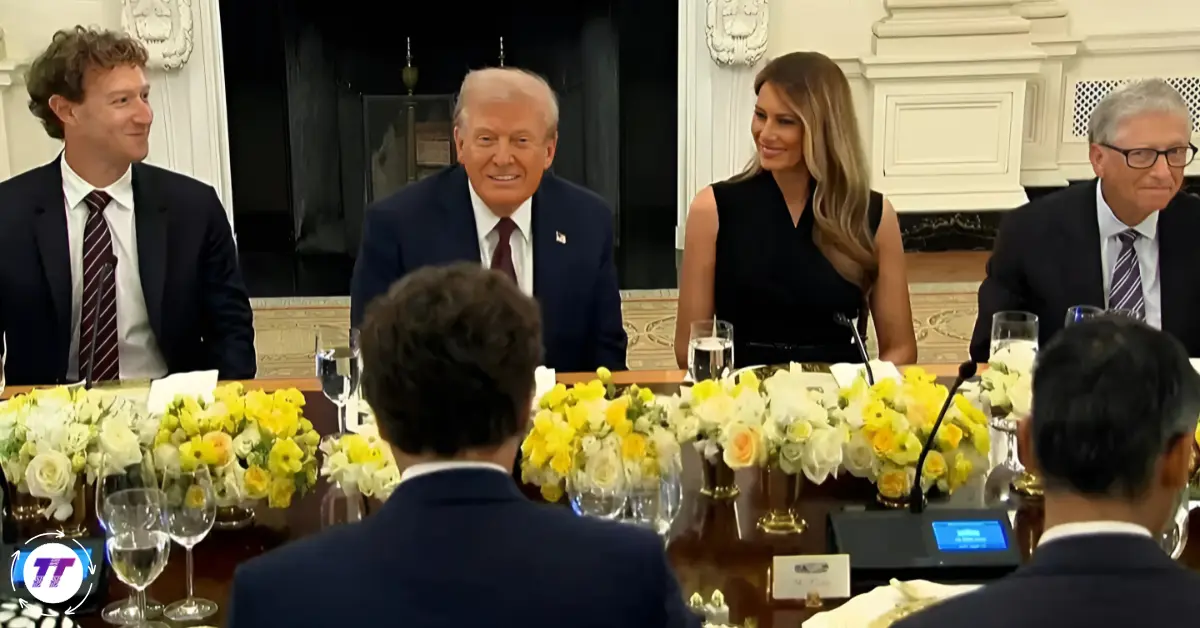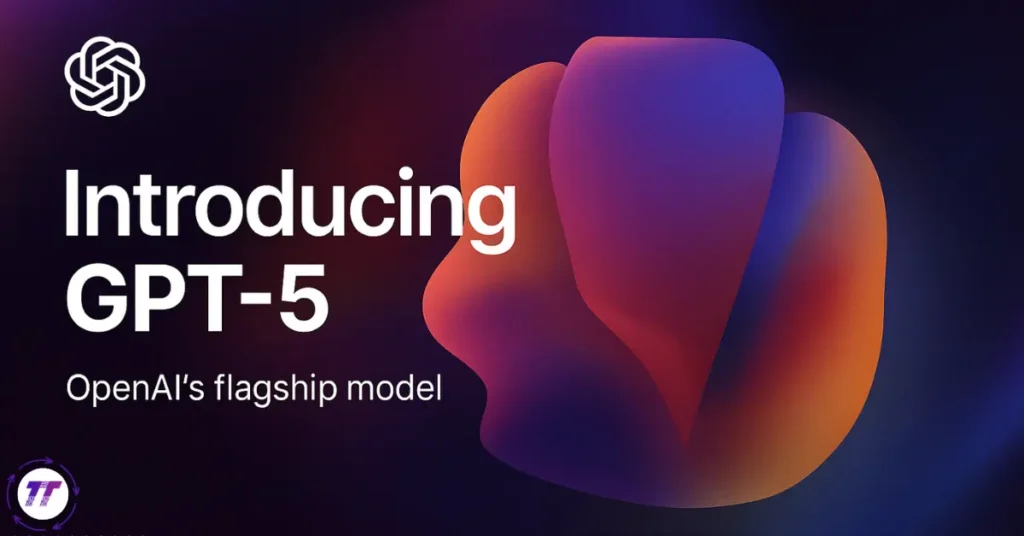The Basics: What Was the White House Power Dinner?
On September 4, 2025, the White House turned into a power stage unlike any other. President Donald Trump, alongside First Lady Melania Trump, hosted what media quickly dubbed the “White House Power Dinner.” Around the dinner table sat more than 30 of the world’s most powerful technology leaders.
Unlike typical business summits, this wasn’t a policy roundtable or closed-door negotiation. It was a televised, semi-public event, broadcast in part on C-SPAN, where each CEO rose to speak, pledge investment, and shower praise on Trump’s leadership.
The Guest List
The attendees included:
- Mark Zuckerberg (Meta)
- Tim Cook (Apple)
- Sundar Pichai (Google)
- Satya Nadella (Microsoft)
- Sam Altman (OpenAI)
- Bill Gates (Microsoft co-founder & philanthropist)
- Lisa Su (AMD)
- Safra Catz (Oracle)
- Leaders from IBM, Dell, and other key players
But Elon Musk was notably absent—a decision that became one of the most talked-about aspects of the evening.
Why It Matters: A Beginner-Friendly View
For someone new to politics or tech, here’s why this event was a big deal:
- Massive Money on the Table: Companies pledged hundreds of billions of dollars in U.S. investments—numbers that could reshape the economy.
- Public Praise, Not Private Meetings: Usually, CEOs and presidents meet quietly. Here, they praised Trump on camera, signaling loyalty.
- AI at the Center: Much of the talk was about artificial intelligence—from research to education—making the U.S. the “AI capital of the world.”
- Politics Meets Business: It blurred the lines between government and corporations, raising ethical questions about influence.
Deeper Dive: Advanced Insights for Professionals
A. The Symbolism of Seating
Photos and videos revealed carefully staged seating arrangements. Zuckerberg sat immediately to Trump’s right, signaling closeness. Bill Gates was next to Melania. Others were placed strategically around the table, suggesting a new hierarchy of influence in Washington.
Political scientists noted that such arrangements are rarely accidental—they signal who has the president’s ear.
B. The Billion-Dollar Pledges
Each executive revealed an investment plan designed to both benefit their company and appease Trump’s agenda:
- Meta (Zuckerberg): $600 billion for U.S. data centers, servers, and AI labs.
- Apple (Tim Cook): $600 billion for American manufacturing and supply chain development.
- Google (Sundar Pichai): $250 billion in infrastructure and cloud services.
- Microsoft (Satya Nadella): Tens of billions toward AI and cybersecurity in the U.S.
- OpenAI (Sam Altman): Support for AI education, labeling Trump’s stance “a refreshing change.”
In total, the promises crossed $1.5 trillion—a symbolic pledge of tech loyalty to the Trump administration.
C. AI as the Main Event
While tariffs, regulation, and taxes hovered in the background, the spotlight was on AI. The First Lady’s “Presidential Artificial Intelligence Challenge” was unveiled before dinner. CEOs praised initiatives to expand AI education, calling it key to global competitiveness.
For Trump, this was a political victory: positioning himself as the leader making America the global center for AI.
D. Musk’s Exclusion and the Political Drama
Elon Musk’s absence stole headlines. Musk had clashed with Trump earlier over federal subsidies, AI regulation, and climate issues. While Musk claimed he was invited, he didn’t attend—fueling speculation about a power rift.
Commentators joked that this dinner was “a loyalty test, and Musk failed.” Critics called it a show of “kiss the ring or be iced out.”
E. The Antitrust Angle
Just days earlier, Google had settled a major antitrust case over online search, avoiding harsher penalties. Sundar Pichai used his speech to thank Trump for helping resolve it, underscoring how legal and political outcomes intertwine with corporate strategy.
The Global Reaction
A. Media Coverage
- Mainstream U.S. outlets like The New York Times and The Washington Post painted it as a mix of praise and sycophancy.
- Tech press (The Verge, Wired) focused on the symbolism and AI agenda.
- Critics on social media labeled it “the world’s most expensive dinner table PR stunt.”
B. International Views
Foreign media interpreted it as:
- China: A clear signal that the U.S. is ramping up its AI race with Beijing.
- Europe: Concerned that U.S. dominance in AI would leave EU regulations lagging behind.
- Developing nations: Saw it as a reminder that Big Tech power lies in Washington, not Silicon Valley alone.
Real-Life Anecdotes & Behind-the-Scenes Moments
- Zuckerberg’s eyebrow raise: Cameras caught him exchanging a subtle glance with another guest—an unscripted moment in an otherwise choreographed evening.
- Bill Gates’ turnaround: Once critical of Trump, Gates praised his “pragmatic leadership” at the dinner, shocking longtime followers.
- Altman’s surprising praise: The OpenAI CEO, usually cautious, openly thanked Trump for making space for innovation.
- The empty Musk chair: Rumors swirled that a seat had been left for Musk, but another executive later filled it.
Step-by-Step Timeline of the Dinner
- Afternoon Session: Melania Trump hosted the AI Education Task Force.
- Arrival: CEOs arrived at the White House, photographed entering with spouses or aides.
- Seating Ceremony: Guests placed strategically around the table.
- Opening Toast: Trump highlighted America’s leadership in business and AI.
- CEO Speeches: One by one, leaders pledged investments and praised Trump.
- Closing Remarks: Trump thanked them, promising to keep America the “AI superpower.”
- Post-Dinner Media Storm: Social media exploded with memes, criticism, and speculation.
Ethical Concerns & Criticism
While many hailed the event as a pro-business milestone, others raised serious questions:
- Crony Capitalism: Was this genuine policy partnership or “pay-to-play” politics?
- Public Trust: Critics said it blurred lines between private gain and public interest.
- AI Hype vs. Reality: Some experts argued the pledges were more PR theater than substance.
- Exclusion Politics: Leaving Musk out sent a message about punishing dissent.
One commentator called it:
“The most expensive loyalty test in political history.”
The Bigger Picture: What This Means for the Future
For Politics
Trump successfully repositioned himself as the “CEO President”—a leader businesses are eager to align with.
For Tech
The event showcased how tech giants are not just companies but political actors, wielding influence at the highest level.
For AI
The U.S. firmly declared itself the epicenter of AI innovation, setting the tone for global competition with China and the EU.
FAQs
Q: What was the White House Power Dinner?
A: A September 2025 event where President Trump hosted top tech CEOs, who pledged massive investments and praised his policies.
Q: Which CEOs attended?
A: Zuckerberg, Cook, Pichai, Nadella, Altman, Gates, Su, Catz, and more—about 33 leaders total.
Q: How much did they pledge?
A: Over $1.5 trillion combined, with Apple and Meta alone committing $600 billion each.
Q: Why wasn’t Elon Musk there?
A: He had a strained relationship with Trump. While invited, he skipped, fueling speculation of a political rift.
Q: Why was AI such a focus?
A: AI is seen as the next global battleground. Trump’s policies promote AI development in education, infrastructure, and industry.
Q: Was there controversy?
A: Yes. Critics called it political theater and raised concerns about corporate influence in government.
Conclusion
The White House Power Dinner wasn’t just about food—it was about power, politics, and the future of AI. It showed how America’s largest corporations are now intertwined with government policy like never before.
Whether you see it as a smart strategy for growth or a troubling mix of money and politics, one thing is clear: this dinner will shape how the world views U.S. tech leadership for years to come.
👉 Stay ahead of the story. Subscribe to our newsletter for weekly insights on tech, AI, and politics—delivered straight to your inbox.


